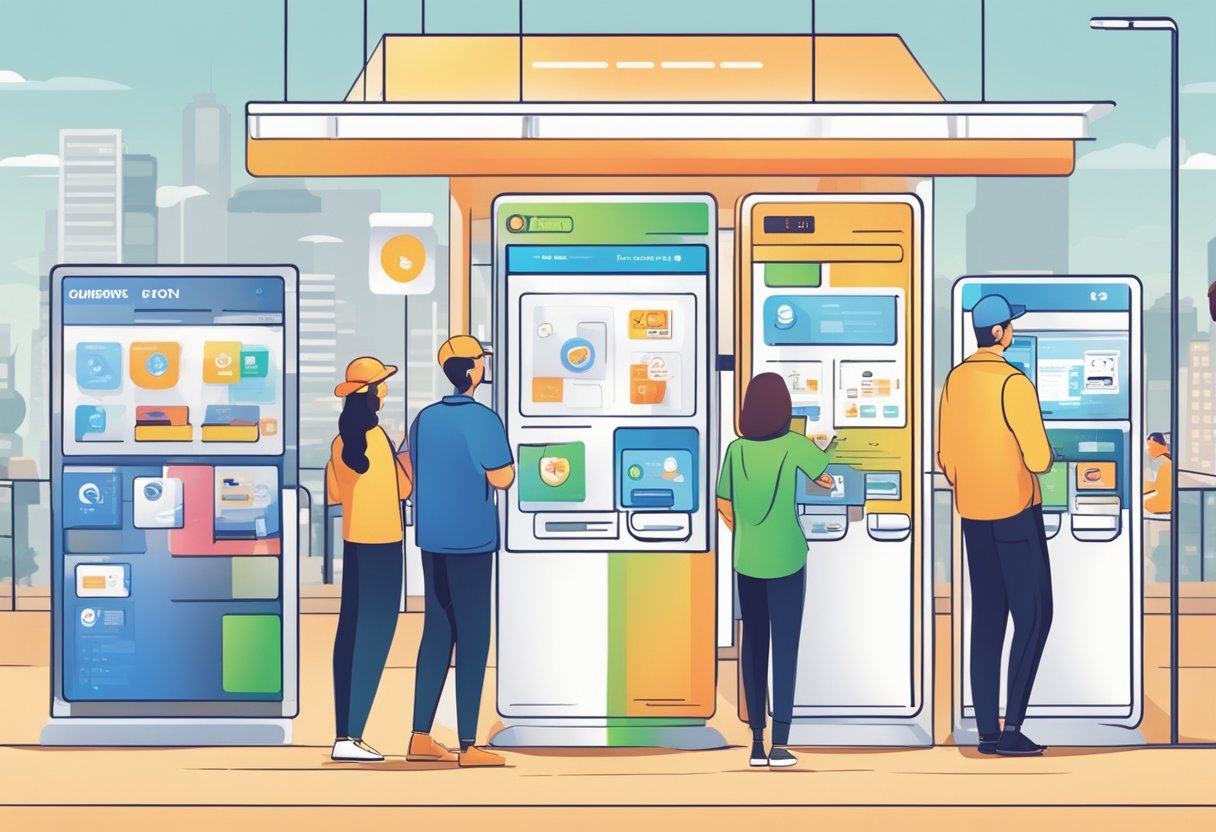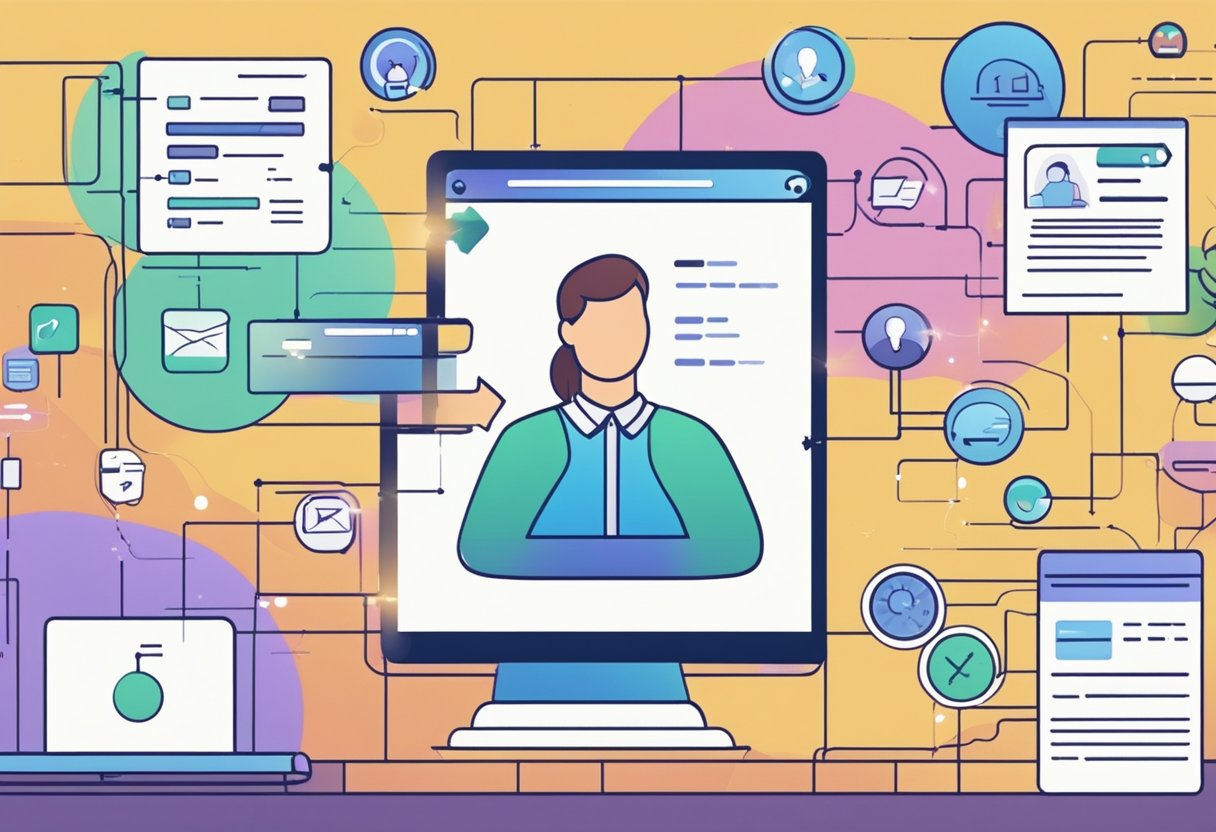Emerging Customer Service Channels: Navigating New Ways to Connect
As businesses evolve in an ever-connected digital world, so do the channels through which they deliver customer service. The landscape of customer interaction is rapidly changing. Traditional means like phone and email are being bolstered by an array of newer, more dynamic channels. Innovations in technology present both opportunities for more personalized, instantaneous service experiences and challenges associated with adopting these emergent mediums.

The rise of omnichannel customer service is redefining how businesses communicate with their customers. More than ever, customers expect seamless service across a multitude of platforms—including social media, live chat, self-service portals, and more. Companies are realizing the importance of these channels not only for their ability to resolve issues quickly but also for their role in building lasting customer relationships.
However, integrating these new channels isn’t without its hurdles. Customer service teams must adapt to a landscape where the lines between different service platforms blur. They need to train in new technologies and approaches, all while maintaining a consistent brand message and high-quality service. Despite these challenges, the shift towards diverse channels of customer service is creating a more responsive and engaging environment that benefits both customers and businesses alike.
Evolution of Customer Service
Customer service has undergone a transformation, shifting from traditional methods to an array of digital channels. This evolution reflects the changing preferences of consumers and the imperative adaptation by businesses, particularly during the COVID-19 pandemic.
From Traditional to Digital
In the past, customer service was synonymous with phone support and email support. Consumers would pick up the phone and dial a hotline or send an email and wait for a reply. Today, they are met with a suite of digital options like chatbots, social media, and messaging apps. What’s pivotal in this shift is how quickly businesses have had to adopt these new digital channels to stay connected with their customers, offering faster and more efficient service solutions.
Impact of COVID-19 Pandemic
The COVID-19 pandemic accelerated the adoption of digital customer service solutions. As physical stores closed and in-person support became less accessible, companies turned to digital channels to fill the gap. They tapped into video calls, live chat functions, and AI-driven support systems to ensure customer service remained seamless. This not only maintained customer support continuity during lockdowns but also set a precedent for future trends in customer experience management.
Technological Advancements in Service
The customer service landscape is transforming rapidly, as companies embrace new technologies to enhance user experience and streamline operations. Let’s check out some of the most impactful tech in play.
AI and Automation
Artificial intelligence (AI) and automation are the game changers in customer service. They’re not just buzzwords; they stand at the forefront of modern service. These tools are handling repetitive tasks with better speed and accuracy than humans ever could. For instance, chatbots are now sophisticated enough to take on initial customer inquiries, making the round-the-clock availability a reality. According to Forbes, technologies such as AI are instrumental in providing assisted service and freeing up time for customer service representatives.
Predictive Analytics
Predictive analytics uses data, statistical algorithms, and machine learning to identify the likelihood of future outcomes based on historical data. It’s not just about understanding customer behavior; it’s about anticipating it. Companies are leveraging predictive analytics to tailor their service approach, ensuring they meet the needs of the customer before they even have to ask for help.
Real-Time Support Systems
Lastly, real-time support systems are providing customers with instant access to help when and where they need it. This includes anything from live chat to real-time tracking of issues. Gartner highlights that the increasing shift to digital self-service platforms is bringing about a wave of tools designed to support instant customer service interactions, reflecting broader technology trends.
Technological innovation in customer service is not slowing down. AI, automation, predictive analytics, and real-time support systems are not only current but defining the future of customer experiences. Adaptation to these technologies isn’t just optional; it’s imperative for businesses aiming to stay ahead in the service game.
Omnichannel Customer Experience
Omnichannel customer experience is all about creating a cohesive service environment for customers. It focuses on integrating various touchpoints and systems to ensure a smooth transition as customers interact with a brand.
Integrating Multiple Channels
In today’s retail landscape, customers expect to interact with a brand through multiple channels such as in-store, online, through social media, and customer service lines. The goal is for these channels to not function in isolation but to be tightly integrated. For instance, a customer service leader’s survey underscores the need for a unified system that reflects changes across all platforms in real-time.
Seamless Customer Journey
A key aspect of the omnichannel experience is that it should be seamless. As customers move from one channel to the next, their journey should continue without any interruptions or repetitions. An article by Sprout Social encapsulates this need by emphasizing the importance of a consistent, integrated approach, ensuring that whether a customer switches from email to social media, or from online to in-person touchpoints, the experience remains fluid and continuous.
AI-Driven Communication

AI-driven communication tools are transforming how customers interact with businesses. These tools enable personalized experiences that can address customer needs swiftly and effectively.
Chatbots and Virtual Assistants
Chatbots and virtual assistants, powered by AI, are pivotal in offering real-time, 24/7 support across various digital platforms. McKinsey highlights the significant role of AI customer service in driving personalized customer engagement. These AI chatbots can handle a spectrum of customer service interactions, from answering FAQs to processing transactions, and they adapt over time to better serve the user.
Voice Assistants
Voice assistants are another arm of AI that’s gaining traction in customer service. They support hands-free assistance and often deliver quick and efficient responses to verbal queries. The integration of voice assistants into devices like smartphones and smart speakers has led to more people using voice commands to perform searches, schedule appointments, or make purchases, thereby promoting personalized experiences in the customer’s day-to-day activities.
Self-Service Strategies

In today’s fast-paced digital landscape, efficient self-service options are crucial for enhancing customer autonomy and reducing reliance on live support.
Building Efficient Self-Service Options
Creating effective self-service channels involves more than just launching a new platform; it’s about seamlessly integrating systems to provide a cohesive experience. Surveys reveal that up to 40% of issues handled by live agents could instead be addressed via self-service if the systems are robust enough. An Interactive Voice Response (IVR) system, when well designed, can guide users to solve problems independently, minimizing the need for live intervention.
- Key Components for Efficiency:
- Intuitive navigation
- Clear information architecture
- Relevant FAQs
Empowering Customers Through Information
Empowerment is key to customer satisfaction, and customers feel more in control when they can find solutions on their own. Offering comprehensive information and step-by-step guidance makes customers less reliant on contacting support. Resources such as detailed tutorials, troubleshooting guides, and informative articles can facilitate self-resolution, making customers feel more confident in using self-service options.
- Methods to Empower Customers:
- Detailed how-to guides
- Troubleshooting checklists
- Accessible knowledge bases
Leveraging Social Media

In the digital age, social media has evolved beyond marketing, becoming a vital customer service tool that allows brands to engage directly and instantly with their audience.
Customer Support via Social Platforms
Companies have recognized that treating social media as a customer care channel is a strategic move. Not limited to marketing, social media platforms offer a way for brands to provide timely customer support. For instance, using tools for social media support ensures quick responses to queries. This real-time problem-solving can boost customer satisfaction and loyalty.
One example of this practice is outlined in a Forbes article that discusses the impact of social media on customer care. It’s also noted in a McKinsey piece that having a comprehensive strategy for social media presence and service can effectively extend customer service capabilities.
Engaging with a Wider Audience
Customer engagement on social media doesn’t just address issues; it also capitalizes on the opportunity to engage a wider audience. Engaging responses and personalized attention on platforms like Facebook Messenger, mentioned as “user-friendly and convenient” on HubSpot’s blog, turn customer service interactions into public testimonials of a brand’s dedication.
Personalizing customer interactions makes individuals feel heard and supported. This approach is detailed further in a Planable blog post, which highlights how companies like Wendy’s use wit and prompt responses to stand out, and thus attract customers on social media.
By utilizing various platforms, brands can not only address customer concerns but also build a relatable and approachable persona that resonates with existing and potential customers alike.
Personalizing Customer Interactions

Personalizing customer interactions has become a crucial part of providing exceptional service. Utilizing data analytics and injecting human elements into digital communication are key strategies to enhance brand loyalty through personalized experiences.
Data Analytics for Tailored Experiences
Companies are leveraging data analytics to understand customer preferences and behaviors better. By analyzing past interactions, purchase history, and even social media activity, businesses can tailor their communications to meet the individual needs of each customer. This data-driven approach not only provides customers with relevant offers and solutions but also streamlines the experience, making it more efficient and satisfactory.
- Benefits:
- Improved customer satisfaction
- Increased retention
- Higher conversion rates
Humanizing Digital Conversations
Despite the surge in digital channels, the need for a human touch remains paramount. Businesses are discovering that the art of personalization extends beyond just using a customer’s name. It’s about creating genuine connections and empathetic interactions. Techniques include:
- Friendly and conversational language
- Empathy in responses
- Recognition of customer emotions and needs
Through these humanized digital conversations, customers feel valued and seen, which fosters deeper brand loyalty and enriches the overall customer experience.
The Human Element in Customer Service

In the age of automation, maintaining the human touch in customer service is pivotal for delivering truly personalized experiences. Staff skill development and empathetic engagement are key components.
Skills and Training for Support Staff
The effectiveness of customer service hinges on the skills and training of the support staff. They require a robust training program that hones communication skills, product knowledge, and problem-solving abilities. For example, a representative well-trained in active listening can make customers feel heard and understood. Innovative companies invest in regular workshops and mentoring sessions to keep their staff sharp and knowledgeable.
Maintaining Empathy at Scale
To maintain empathy at scale, businesses use technology to provide personalized experiences without losing the human touch. An empathetic approach ensures customers feel valued, even as the company grows. Companies employ strategies such as personalized greetings and remembering past interactions to create a rapport. They might also leverage customer data to anticipate needs and provide tailored support.
Feedback Loops and Service Improvement

In customer service, feedback loops are essential for fine-tuning operations and aligning services with customer expectations. They use direct input to measure customer satisfaction and drive business growth.
Analyzing Customer Feedback
Customer feedback comes in many forms—surveys, social media comments, reviews, and direct communication. Each channel provides raw data that businesses can analyze to discern patterns. For instance, frequent comments on social media might highlight the need for more efficient response times, while survey results could point to specific areas where service could be enhanced.
- Quantitative analysis: Metrics like Net Promoter Scores (NPS) and Customer Satisfaction Scores (CSAT) give businesses clear numbers to target and improve upon.
- Qualitative analysis: Text analytics of survey open-ended responses or call transcriptions can reveal nuances that numbers alone might miss.
Iterative Process for Growth
Creating a successful feedback loop involves an iterative process. It’s not just about collecting customer feedback, but also about promptly implementing improvements and reassessing their impact. Feedback identifies service gaps or strengths, leading to strategic decisions, such as streamlining IVR menus to reduce caller frustration. This ongoing cycle fosters a culture of continuous improvement and helps businesses adapt to changing customer needs, which in turn can fuel business growth.
The Future Outlook

In the realm of customer service, innovation and the adoption of new technologies stand at the forefront of shaping how businesses will interact with their customers. Staying ahead means understanding upcoming trends and recognizing the opportunities they present.
Anticipating the Next Big Thing
Customer service channels have always been about striking a balance between efficiency and personalization. They can expect to see a rise in value-driven service models that focus on predictive support, preempting issues before the customer is even aware of them. This proactive approach could redefine the standards of customer engagement, offering a seamless and intuitive experience.
Investing in New Technologies
The investment in new technologies is key to unlocking these future customer service opportunities. Companies are turning to data analytics and artificial intelligence to drive these innovative trends. For instance, the seamless integration of omnichannel customer service will be crucial, ensuring customers receive consistent support across various platforms—be it social media, live chat, or traditional phone lines.
Frequently Asked Questions

The landscape of customer service is constantly evolving, with new platforms emerging and businesses tirelessly innovating to meet customer expectations in 2024.
What’s the hottest new platform businesses are using for customer service?
Businesses are flocking to integrated omnichannel customer experience platforms that allow seamless communication across various channels such as social media, live chat, and traditional email.
How are companies mixing up their customer support game this year?
Companies are deploying advanced AI-driven technologies like chatbots and virtual assistants to offer instantaneous support and personalized customer service experiences.
Can you list some fresh customer service methods that are gaining traction?
Self-service options and community-driven support are among the customer service methods becoming popular, catering to customers who prefer solving issues independently.
What’s the latest vibe in customer service communication for 2024?
The trend is towards instant support channels like live chat which combine the immediacy of a phone call with the convenience of messaging.
How has the customer support scene evolved with the latest tech?
The introduction of immersive technologies like augmented reality for troubleshooting and the extensive use of big data analytics for optimizing customer interactions are notable evolutions in tech-driven customer support.
What are fans saying about the new ways to reach out for help or support?
Customers are expressing their appreciation for the faster, more efficient resolution of issues and the ability to interact with support on their preferred platforms, creating a more personalized customer experience.


